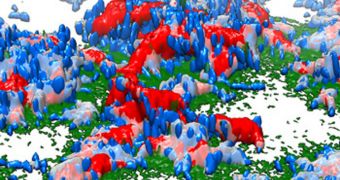University of California in Berkeley (UCB) scientists announce the development of a new imaging technique, which they say could be used to look at bacterial biofilms before doctors decided how to attack a large range of infection types.
Many species of bacteria protect their colonies with a lipid biofilm, which is so well put together that it protects the microorganisms underneath from the action of the vast majority of available drugs. Combating these structures is an extremely important goal for researchers.
Bacteria that protect themselves via biofilms are responsible for producing a wide array of severe diseases, including cystic fibrosis, cholera, chronic sinusitis, and so on. Their shields are also impervious to the action of antibiotics.
What the UCB team did was develop a strategy for using fluorescent labels on these defensive structures. By combining these tags with super-resolution light microscopy, the team was able to observe the structure of biofilms in close detail.
Additionally, the researchers were able to identify a series of genetic targets that may be used by future drugs. If the biofilms can be destroyed, then the bacteria underneath would easily fall prey to existing antibiotics. The issue therefore becomes finding cracks in the biofilms, and exploiting them.
The work was led by UCB Department of Physics PhD student Veysel Berk, who is also based at the California Institute for Quantitative Biosciences (QB3). He collaborated closely with former UCB professor and Nobel Prize laureate Steven Chu.
In a paper published in the July 13 issue of the top journal Science, Berk explains that that goal of the research team is to make these difficult bacteria homeless. The colonies can then be addressed and eradicated methodically.
“In their natural habitat, 99.9 percent of all bacteria live as a community and attach to surfaces as biofilms; according to the National Institutes of Health, 80 percent of all infections in humans are related to biofilms,” he explains.
Speaking about the new imaging technique, Berk said that “ot was a very simple, cool idea, but everyone thought it was crazy. Yes, it was crazy, but it worked.”

 14 DAY TRIAL //
14 DAY TRIAL //